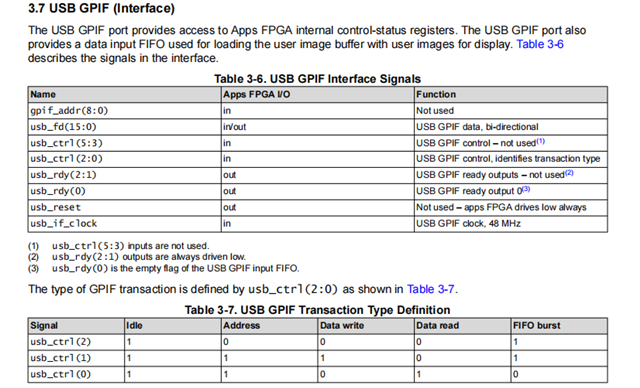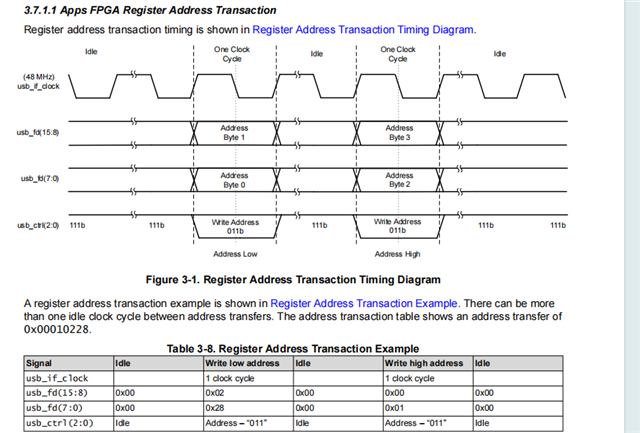Other Parts Discussed in Thread: DLPC910
Tool/software:
Hello,
I have reprogrammed the LX50 FPGA with my own code, and sent pattern data from computer to DMD using the win7 GUI Application which is provided by Cypress. The pattern can be displayed on the DMD successfully.
Now, I want to use The DLP4100 Discovery Explorer TI provided to transfer data and commands(The version is 2.0 updated at December 2018. ), and encountered two problems:
- After the FPGA has been programmed with my own code, when the GUI starts, the D2 light on the EVM turns red and never goes out, indicating the APPSFPGA is currently being configured. I guess the reason for the phenomenon is the FPGA couldn't respond correctly to commands sent from the GUI. Is it right?
- The interface information between CY7c68013 and APPS FPGA such as APPSFPGA register address definition and GPIF definition for each command from GUI is not available. Therefore, the APPSFPGA can not deal with the pattern and commands from GUI .
I wonder if TI can provide all the commands from DLP4100 Discovery Explorer, as well as the corresponding interface definitions and timing diagrams. Without the information, I do not know any other way to develop my own APPSFPGA code, which can be controlled with the DLP4100 Discovery Explorer application.
Similar information can be found in the “DLPC910 apps FPGA GUIDE”, which is shown here. However. no information for the DLPC410 EVM can be found.



